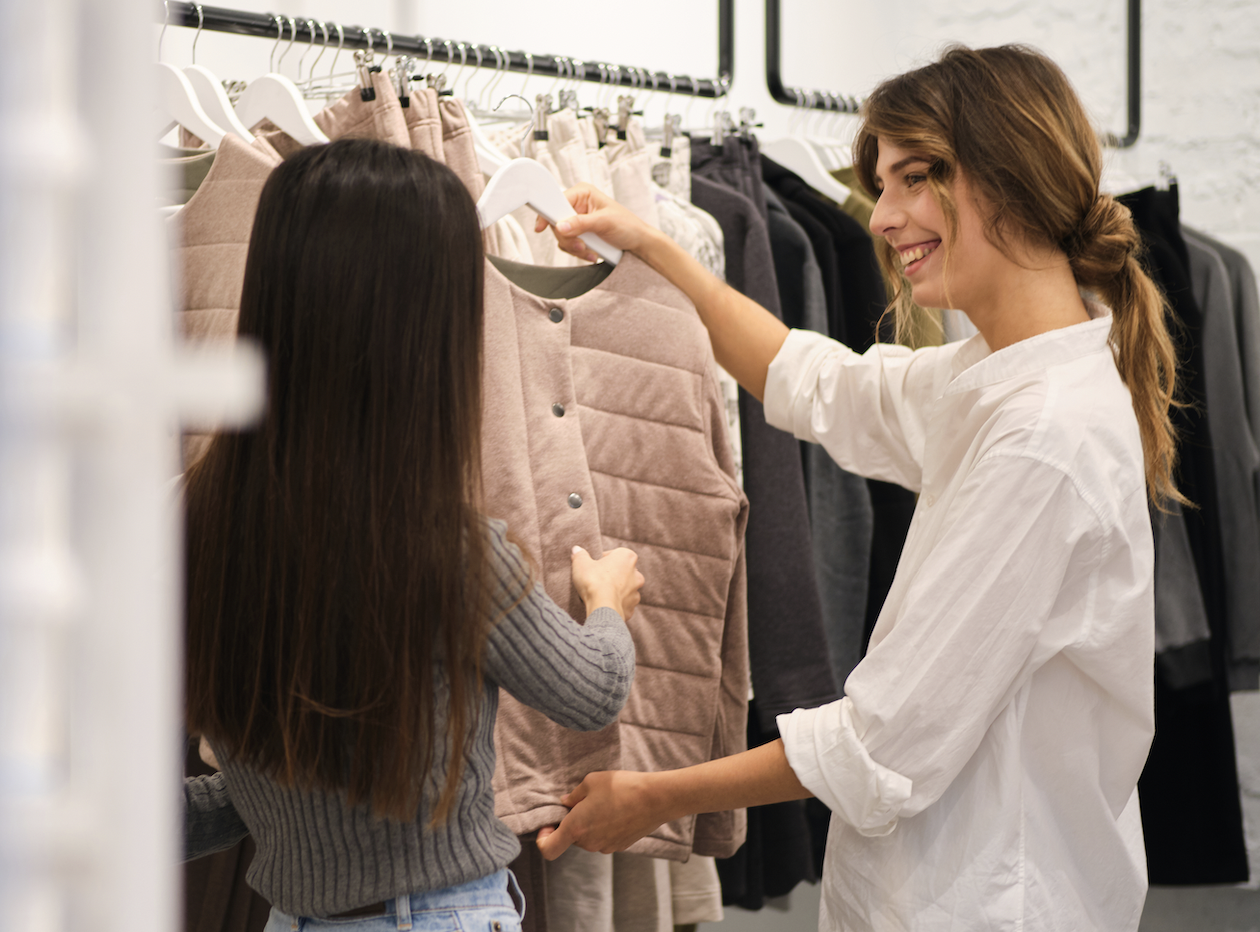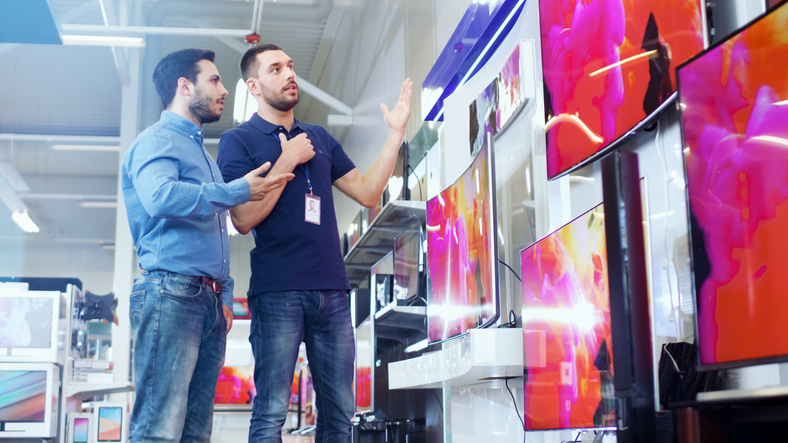63 Statistics Proving Why You Need Retailer Collaboration Tools

Every brand will improve their bottom line by investing more time and energy in collaborating with their retail partners. That’s exactly why we built the Myagi platform to mend gaps in the flow of knowledge from your brands’ marketing department and retail sales floors.
But most brands still don’t put much time or thought into the way they’re communicating with distributors, retailers, and retail sales associates. It’s an oversight that needs to be fixed.
We don’t want you to take our word for that though, so we gathered the world’s biggest collection of statistics that show the benefits of brand investment in retail experience. Whether you, your boss, or your team needs some convincing, you’ll find the evidence you need here.
Give the Customer What they Want
- 50% of shoppers seek advice when they enter a store. (CNBC)
- 84% of shoppers occaisionally seek out sales associates for help or advice. (Salesfloor)
- In a study conducted by Nordstrom, they found that 90% of their shoppers who receive assistance while shopping purchase something, compared to 67% of those who don’t. (MarketForce)
- 79% of shoppers think that being able to engage with a knowledgeable sales associate is important. (Retaildive)
- 75% of consumers expect a consistent experience wherever they engage with a brand. (Salesforce)
- 11% of shoppers say they prefer to visit retail stores over online shopping specifically so they can ask questions of a sales associate. (KPMG)
Why in-store training rep visits need to be supplemented
- Retail stores have 59% annual turnover. That means most of the staff you trained last year aren’t there anymore. (Small Business Chronicle)
- 62% of new store sales associates receive less than 10 hours of training. (Retail Wire )
- 83% of shopper think they know more than sales associates (RetailDive)
- Just 20 minutes of online product training can increase sales for a sales associate by 1.8%. (HBS)
- 60% of brands still only use spreadsheets to share product information with retailers. (Retail Touch Points )
- 89% of brands agree that large online retailers have changed how customers now expect all retailers to operate. (NuOrder)
- 22% of brands reduced their sales rep force in 2018. NuOrder
- 58% of brands are increasing budgets for tools and technology for their sales rep team in 2018. (NuOrder)
- 32% of retails sales associates receive no formal training. (RetailDive)
The More Retailers Know about Your Products, the Better
- 87% of shoppers are more likely to buy a product recommended by a sales associate. (Salesfloor)
- Knowledgable Sales Associates can increase sales by up to 23%. (Wharton)
- 49% of shoppers more likely to buy something in store if helped by a knowledgeable sales associate. (TimeTrade)
- 49% of shoppers would pay more for a product if they get a highly personalized in-store experience. (TimeTrade)
- Additionally, 59% of those mentioned above would pay at least 10% more for those products. (TimeTrade)
- 24% of brands see retailers focusing on their own brands as the biggest threat to their wholesale business. (NuOrder)
- 82% of brands agree that large retail outlets are changing the rules by creating private labels, an believe they need to change the rules as well. (NuOrder)
- 51% of brands agreed that they’re continuing to hire new sales reps in 2018. (NuOrder)
Retail Sales Associates Still Matter
- 64% of shoppers plan to continue shopping at retail establishments. (RetailDive)
- 30% of shoppers know the names of sales associates at retailers they visit. (Tulip Retail)
- Nearly 50% of shoppers say a knowledgeable store associate who is able to suggest products based on their purchase history would encourage them to shop in-store. (Tulip Retail)
- 85% of Americans still regularly shop in retail stores. (RetailDive)
- On average, Americans visit three retail stores per week. (RetailDive)
- 66% of Americans between 18 and 35 think sales associates are extremely important compared to 54% for those between 36 and 51 and less than half (49%) of those 52 or older. In other words, millennials think sales associates are more important, not less. (ChargeItSpot)
- 73% of shoppers go to sales associates primarily for expert knowledge. (Forbes)
- In-store purchases will continue to grow by between 2-3% each year. (McKinsey)
- 54% of brands plan to incentivize retailers with new discounts, performance rewards and other benefits next year. (NuOrder)
- 90% of consumers who need help from a sales associate will leave the store if they can’t find that help. (Timetrade)
- Of 60 major retailers surveyed, 80% noted a sales increase of 25-50% when shoppers are assisted by helpful retail associates. (Timetrade)
Great Merchandising Requires Great Cooperation
- 44% of retailers still use manual methods for in-store audits and compliance. (Trax)
- Computer enhanced store merchandising audits take up to 60% less time. (Trax)
- 90% of organizations currently fail to effectively execute their strategies and reap their full benefits. (Delloite)
- 68% of retailers already use mobile applications used for sales, merchandising, and distribution tasks. (Consumer Goods)
- By implementing new planograms in 1,500 stores, Red Bull experienced 30% growth in new household purchasing. Red Bull was able to confirm that new planogram stores experienced a 24% reduction in out-of-stock events. (Ris News)
- Land O’Lakes collaborated with retailers to determine if adequate inventory levels would sustain the remaining promotional days. Each promoted item was analyzed closely by distribution center and store. The end result was 3 times faster sales compared to the market overall. Out-of-stocks for promotional periods dropped from 18.9% to 10% coupled with a 50% improvement in post-promotion inventory levels. (Ris News)
- Through greater visibility into store-level inventories using digital tools, L’Oreal analyzed weekly numbers to understand discontinued item liability and ensure supply levels for new items would meet customer demands. This yielded a 42% gain in sales on new items along with an 82% increase in inventory efficiency. (Ris News)
- Using current tools, 44% of retail stores are unable to properly reset a planogram within 13 weeks. (National Association for Retail Marketing )
- Amongst top grocery sellers, planogram compliance typically falls below 50%. (Cognizant)
- In one study, full planogram compliance resulted in a 7.8% sales lift. (National Association for Retail Marketing)
- On average, planograms go out of compliance at a rate of 10% per week. (National Association for Retail Marketing)
- Only 57.4% of retailers have a system in place to measure planogram compliance. (Cognizant)
- Only 4% of retailers estimate that in-store promotions, resets and other merchandising activities are implemented completely and accurately. (In-Store Implementation Network)
- 50% of authorised retail promotional displays are not erected or erected late. (In-Store Implementation Network)
- The total cost of sub-optimal merchandising to the U.S industry is approximately 1% of gross product sales. (In-Store Implementation Network)
- Successful collaboration with retail partners for merchandising execution can generate up to 10% in operating margin improvements. (In-Store Implementation Network)
- When asked, brands explained that improving merchandising is their number one response to decreasing retail floor space. (NuOrder)
Vendor-Retailer Data Sharing Is Critical
- 47% of suppliers already receive daily downstream data from between two and five retail partners. (Consumer Goods)
- Two-thirds of suppliers agree that, with data sharing, quality of collaboration and dialogue with retail partners has significantly improved. (Ris News)
- 75% of suppliers see data sharing with retailers as an important strategic initiative. (Ris News)
- 45% of suppliers have seen significant ROI from their data sharing initiatives. (Ris News)
- 70% of retailers agreed that, with data sharing, the quality of collaboration and dialogue has significantly improved. (Ris News)
- Retailers with a high level of trust in their vendor generate 78% more sales than those with a low level. (HBR)
- 77% of distributors stated the level of support they receive from their manufacturer suppliers has stayed the same or gotten worse over the last year. (ACHR)
- 82% of manufacturers believe problems in their working relationships with distributors hurt sales and profits. (ACHR)
- 92% of distributors believe problems in their working relationships with manufacturers hurt sales and profits. (ACHR)
- 91% of participants in a survey of electronics manufacturers and distributors believe there is a need for manufacturers and distributors to reimagine how they can better work together and more collaboratively. (NAED)
- 46% of brands plan to give retailers visibility to real-time data and sales trends in the coming year. (NuOrder)


